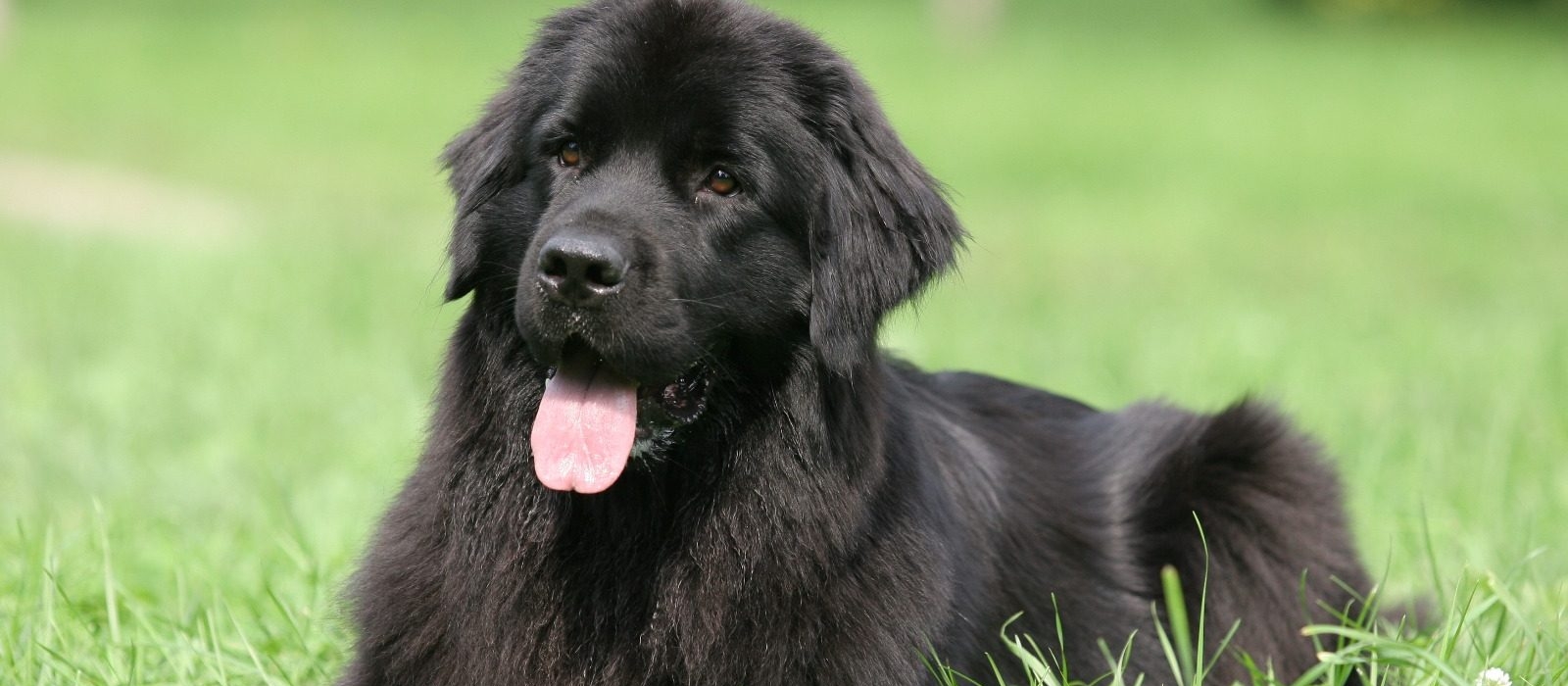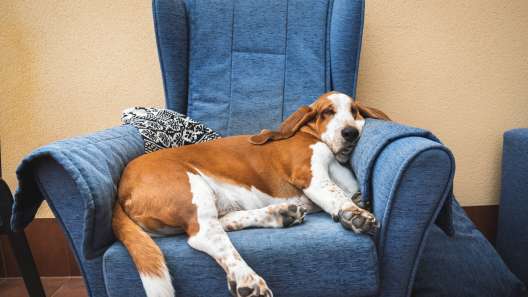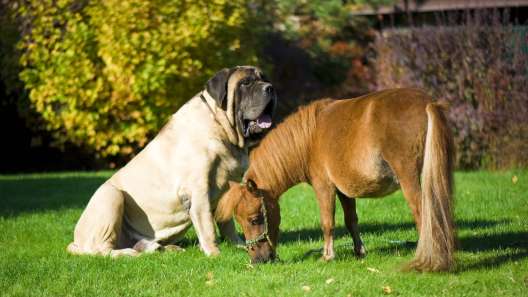-
Activity Level:
moderate
-
Shedding Level:
moderate
-
Grooming Level:
moderate
-
Trainability:
high
-
Good for Novice Owners:
high
-
Adaptability:
moderate
-
Kid/Pet Friendly:
often
-
Prey Drive:
low
-
Watchdog:
chill
- Average Size: Giant
- Average Lifespan: 9-10 years
- Registered?: aca, akc
Newfoundland Dog Breed Information
Overview
Temperament
Adaptability
Health
Owner Experience
Grooming
Activity Level
Size
Life Span
Did You Know?
The first thing that stands out about the Newfoundland is their sheer size. The next is their notably sweet temperament and nature. Affectionately called a Newfy, Newfie, or Newf, Newfoundlands are one of the world’s largest dog breeds.
They originated in Canada as a working dog for fishermen. One of the facts about Newfoundlands is that they are built for the water. They have webbed feet, large lung capacities, water-resistant coats, and plenty of strength, which makes them a perfect fit for navigating work in the water.
It’s no wonder that they are one of the dog breeds that tend to love water. Newfies specialized in water rescues in the icy waters of the North Atlantic Ocean. They were also commonly used to drag fishing nets to shore or to pull carts to market.
Their seafaring days are not as common now, but they are still serving as water rescue dogs around the world. The American Kennel Club recognized the Newfoundland in 1886 as part of the Working Group.
One of the most affectionate dog breeds, Newfoundlands are known for being gentle giants and for their “nanny dog” nature. Well-socialized Newfies are loving, gentle, and responsive. These dogs make great family companions as they are wonderful with children, other dogs, and other pets. They are also one of the best dog breeds for large families because of this.
Provided they are well-socialized, they are watchful, but open and friendly with strangers. Their protective nature makes them great watch dogs while their docile, gentle, and sweet nature makes them a kid-friendly dog breed that is a perfect fit for families with children. Whether on the farm, out on the water, or just being a family companion, the Newfoundland is right at home.
Due to their size, this dog is moderately adaptable. They can adapt to apartment living as long as they get enough attention and exercise and have enough room to move. But, their large size makes them better suited for larger homes with enough room to handle them.
They do well in just about any climate, but their thick coat tends to make them better suited to moderate or cooler climates. Newfies tend to be one of the dog breeds that love winter and many tend to enjoy hanging out in the snow.
As with any dog breed, they are sensitive to heat and probably more sensitive than other breeds with thinner coats. Although they handle the cold better than many dog breeds, they are not necessarily a snow dog breed and are still sensitive to the extremes. They are also in tune with their families and protective, so they don’t like to be away from them for long periods of time.
Potential health concerns to be aware of in Newfoundlands can include hip dysplasia, elbow dysplasia, cardiac disease, and a condition called cystinuria. Cysturnia is a condition that causes stones to form in the urinary system. Good breeding practices reduce the risk of health issues and make a big difference in the health of Newfie puppies.
Reputable breeders will screen their dogs to avoid passing issues to puppies. Make sure you ask about the health and genetic history of both parents and about any health tests that have been done. The national breed club recommends hip and elbow evaluations, a cardiac exam, and a cystinuria DNA test at a minimum.
As a giant dog breed, they are prone to joint issues as they age and are at a higher risk for bloat. Bloat in dogs can be dangerous if it’s not just gas and the stomach flips (gastric torsion). It’s important to know how to reduce the risk of developing it and the symptoms that mean it’s time to get to the emergency vet.
Although Newfies grow into huge dogs, they are also highly trainable. They are highly intelligent, eager to please, and sensitive, which makes them a good fit for owners of any experience level. Because they are sensitive souls and in tune with their owners, it’s important for training to stay consistent, calm, and focused on positive rewards and praise.
The Newfy is one of the fluffiest dog breeds and has a double coat. The undercoat is flat and water-resistant while the outer coat is coarse, full, and moderate in length. They will shed moderately year-round and more heavily twice a year as the seasons change. In general, a thorough weekly brushing is sufficient for your Newfoundland’s fluffy coat.
It may be a good idea to increase to daily brushings during seasonal shedding sessions and to include an undercoat rake in your collection of dog grooming brushes. Not only will this help keep your Newf comfortable, but it will also help contain the loose fur to a brush. These dogs only require an occasional bath or more often if they have been swimming or have gotten dirty.
In addition to coat care, you will also need to take care of your Newfy’s nails, ears, and teeth. Nails that are too long can make movement uncomfortable or painful, so it’s important to trim them regularly. Nail trimming once or twice monthly is usually sufficient to keep your dog’s nails under control.
Because the Newfoundland’s ears flop over, they are more prone to trapping dirt, debris, and moisture, which can lead to ear infections. You’ll want to check your Newf’s ears weekly to make sure they are dry, clean, and free of debris. You can carefully clean your dog’s ears as needed to help prevent ear infections.
It’s also important to care for your dog’s teeth. Dental disease is one of the most common health issues in dogs, but it doesn’t have to be! Proper dental care for dogs, like brushing teeth or using an enzyme toothpaste every day, can help prevent painful dental diseases like gum disease and tooth decay. You can even supplement your efforts with vet-approved dental hygiene chews and a “dental care diet”.
Getting your Newfoundland puppy used to having their mouth, paws, and ears handled early on will grooming a much easier experience as they grow. By keeping it a positive experience, regular grooming sessions may even become a bonding experience that both you and your dog look forward to!
Although they can sometimes be one of the laziest dog breeds that is happy to lie around and relax, the Newfoundland has a moderate energy level. Daily walks plus some playtime and extra activity are usually plenty for this dog breed.
As a giant dog breed, it’s important to keep their activity low-impact until they are about two years old. Before that, their bones are still growing and their joints are still developing. High-impact, strenuous exercise can damage their still-growing and developing joints, so keep it easy until your vet clears them for more.
They’re known for being avid swimmers, so don’t be afraid of going swimming with your dog! These dogs are sturdy and are at home on land as well as water, so they may also enjoy hiking with you in addition to visiting the dog park and training in dog sports.
They tend to be a good fit for carting or drafting competitions, dock jumping, obedience, rally, agility, tracking, flyball, herding, and more. Newfs are truly multipurpose and will enjoy a wide variety of activities!
A fully-grown Newfoundland usually stands 26-28 inches tall and weighs 100-150 pounds.
Newfoundlands generally live 9-10 years on average.
A Newfoundland named Seaman was part of the Lewis and Clark Expedition of 1802. He served as a beloved companion, guard dog, and hunter.









